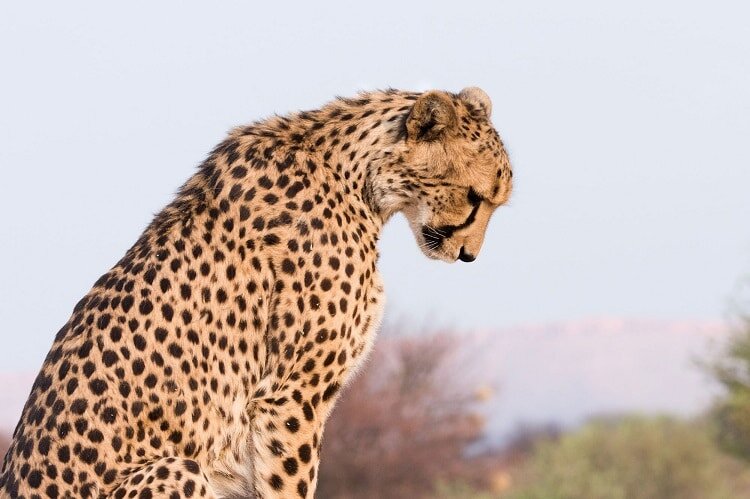Artificial insemination failed on cheetah in captivity

TEHRAN – Female Asiatic cheetah, Delbar, being kept in captivity at Tehran’s Pardisan Park, has undergone artificial insemination some 100 days ago, but it turned to be unsuccessful, director of the wildlife conservation and management at the Department of Environment has said.
Artificial insemination is a method of treating infertility by inserting semen directly into a womb.
With her first pregnancy failed, artificial insemination became an option, as the possibility of natural mating of Asiatic cheetah couple Kushki and Delbar has declined in the past years, ISNA quoted Shahabodin Montazemi as saying on Wednesday.
Kushki’s sperm introduced into Delbar’s cervix for the purpose of achieving a pregnancy about 100 days ago, but it seems to be failed due to no changes in her appearance, he explained.
“Nonetheless, the method didn’t prove to be effective much worldwide, but we took our chance,” he said.
The result could have been announced earlier, but it involved running a scan using anesthetics which was risky putting her in a state of high anxiety, he noted.
“Asiatic cheetah’s artificial insemination was first performed in Iran, which was not successful. However, given that the DOE is planning on captive breeding of cheetahs as one of its main priorities, it would not overlook any chance of reproduction and conservation of the valuable species.”
Other possible scientific measures to breed Asiatic cheetahs will be put on agenda in the near future, he added.
“All of our information on captive and semi-captive breeding of cheetahs relates to African cheetahs. Apart from information obtained from the Pardisan Park breeding experience, we have no other reliable data on the regeneration of Asiatic cheetah subspecies,” Montazemi explained.
So, it was a precious experience for future conservation plans, regardless of the outcome, he noted.
“Important factors such as sperm quality, age, biological factors, and ultimately the low chance of cheetah birth greatly reduce the probability of female cheetah’s pregnancy by artificial insemination.”
“However, we should not miss out on regeneration of the endangered Asiatic cheetah,” he suggested.
“We have not yet reached a final conclusion on new breeding program, and we are closely scrutinizing the matter with domestic and foreign experts, but transferring Pardisan Park cheetah for mating and regeneration is one of the options we are conducting feasibility studies about.”
In addition, implementing another method such as invasive artificial insemination (surgery and direct insertion of sperm into the fallopian tube) is also planned for Delbar, which will be postponed after assuring the cheetah’s health, he stated.
“The DOE’s main goal is to protect the Asiatic cheetah in the natural habitats, and the cheetah breeding program comes after it because we can keep the cheetah alive to reintroduce it to nature in the future and enhance the genetic diversity of the subspecies,” he concluded.
The world's fastest mammal, capable of reaching speeds of 120 kilometers per hour, once stalked habitats from the eastern reaches of India to the Atlantic coast of Senegal, once their numbers have stabilized in parts of southern Africa, but they have practically disappeared from northern Africa and Asia.
The subspecies "Acinonyx jubatus venaticus", commonly known as the Asiatic cheetah, is critically endangered, according to the International Union for Conservation of Nature, with fewer than 50 believed to remain in Iran.
Roads fragmenting cheetahs’ habitats are the main threats for the species, while guard dogs and stray dogs, drought spells, decreasing population of the prey species to support the cheetahs, and habitat loss are also other factors endangering the sparse population of the cheetahs in the country.
FB/MG
Leave a Comment